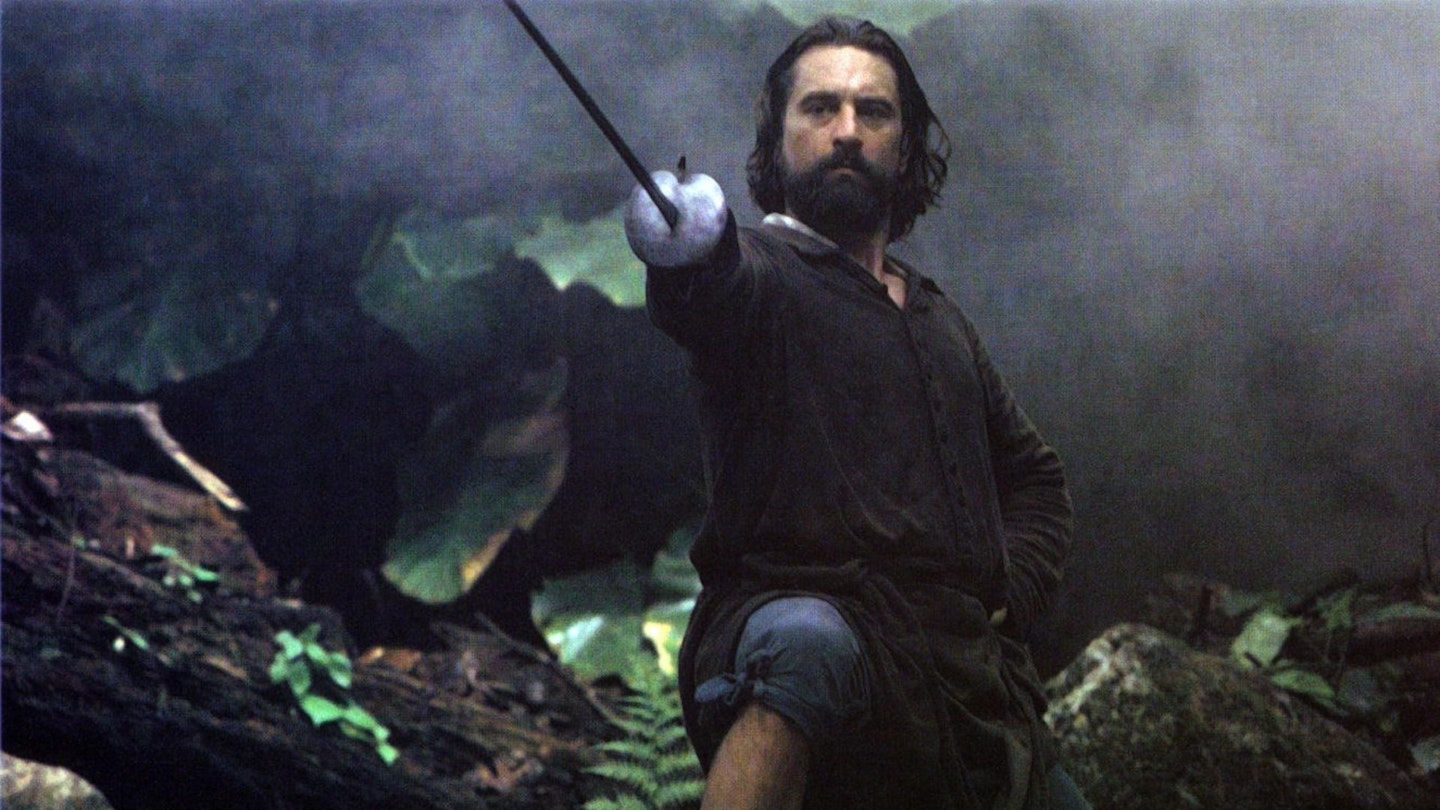Unsurprisingly, following the wealth of plaudits and awards that were heaped upon Roland Joffe's more documentarian passion play, The Killing Fields, he was keen to continue with such grandiose social scope. Producer David Puttnam (obviously with one eye on re-inventing the legacy of David Lean's epic productions of the '60s) married his director with Lean's former scriptwriter, Robert Bolt, to shape this tale of a priest, a warrior and a tribe striving to support a mission in the face of political upheaval.
Bolt's script cleaved to one of his familiar themes: the idea that the bigger picture will always smother the innocent. Add to this the struggle for redemption, the contradictions of faith and the dubious nature of progress - then shoot it on location in Colombia and Argentina, using genuine native tribes as the luminous Guarani. No-one could accuse these filmmakers of lacking courage.
Lacking the centrality of Lean's work, Joffe and Bolt spread the story between three divided characters - a shadow-dance of the Holy Trinity. The most primal and colourful of these is Robert De Niro's Mendoza, the mercenary and slave-trader who murders his own brother in a fit of jealous pique. A man driven by powerful, redolent emotions, he suffers a Sisyphean penance, spectacularly and repeatedly hoisting the weight of his past, in the shape of his bundled armour and weaponry, up the cliff-face.
Accepted by tribe and Jesuit order, his is less a battle with faith than the furies of the real world, where the capacity for love and compassion can co-exist with the impulse for violence. De Niro, in a signal of the rigid, internalised characters of his later career and working with a script of limited words and no great attempt to align accents, cunningly reduced Mendoza to a man of physical expression.
Father Gabriel is a more elusive character to define. He starts as a saint and finishes as a martyr, giving Mass as Spanish soldiers annihilate his flock. Yet there is an arc for Jeremy Irons' emotionally contained priest. Faced with his own sense of betrayal, he too refuses to leave the mission, defying the orders of the Church.
Many read the film as an attack on the hypocrisy of a Catholic Church transformed into a political body, manoeuvring its own relevance in the face of a modernizing Europe. But there is more subtlety to it than that. The film optimistically contests that the true Church actually resides in the individual priest or missionary, rather than the destructive bureaucratic bodies of the Papacy.
It is the brilliant Irish actor Ray McAnally's Bishop Altamirano - ostensibly the narrator and third lead, sent to judge and condemn the missions - who gives the clearest picture of the folly of man. He understands that survival depends on going with the flow, but suffers that it would have been better had neither slave-trader nor priest ever ventured in the jungle.
Upon release, many attacked the film for being cold-blooded and, true, there is a guardedness to Joffe's vision; he steeps his film in a historical leanness, where the beauty of the Colombian jungle is as stark and ruthless as the conquistadors.
Shooting in the dense, soiled tones of the real rainforest, gifted cinematographer Chris Menges opts for an overcast quality, drenching the humid drama in downpours of rain, caking everything in lank mud. The whole film has a swollen, sickly look to it - pestilence is in the air. For the filmmakers alike, the stylisation took an uncomfortable reality; with the exception of the indomitable De Niro, cast and crew were assailed by amoebic dysentery throughout the shoot.
Nothing is prettified to make the film more palatable, not even the emotional currents. Unlike David Lean, Joffe seems opposed to grandstanding, flatly refusing to wear his heart on his public school sleeve - an admirable restraint that may have contributed to the film's box office flop.

